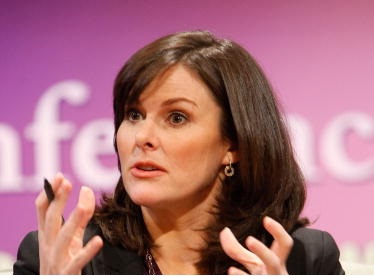911! The Fight to Save Responsive Teaching
By: Marla Kilfoyle, Executive Director BATs
Most teachers in this country are required to take Professional Development Courses (aka PDP) as part of their continued requirements for employment. The amount of hours that teachers have an obligation to take depends on the state. I teach in New York State and as a tenured teacher, I am required to do 10 hours (or usually five classes) of professional development a year. My district offers a wide array of classes; history classes, technology classes, methods and pedagogy classes, and classes that sell the current fad in education. On 5/11 I took a PDP course called “Differentiated Instruction.” The instructor was a retired teacher who traveled around the state teaching this course to various districts. The sad reality is that the word “differentiated instruction” has been co-opted by corporate education reformers to mean, “stick a student in front of a computer all day long and let the teacher act as the facilitator.”
I began to think about the definition of differentiated instruction. Differentiated instruction, once upon a time, meant responsive teaching. What is responsive teaching? It is responding to the children in your room. Responsive teaching is about designing lessons that meet your student's needs, that inspire them, assist them in finding a passion, and takes them to the place they want to go. Responsive teaching is about a trained educator assessing (and not in a paper/pen or computer way) the passion, motivation, and joy that children will find in learning. It is about researching all that children are, and want to be.
I realized as the course meandered through the end of my long day, corporate education reform is attempting to kill responsive teaching.
High Stakes Testing, value added measures, and the threat of school closures have produced a culture of fear in our schools. For children High Stakes tests and over testing adds to the stress of their school day, for teachers Value Added makes them fearful of job loss due to factors they cannot control, and school closures put whole communities at a fear level very few understand.
Teachers and public schools are slowly losing their ability to teach responsively. Responsive teaching has been replaced by test prep to keep jobs; responsive teaching has been replaced by a prescriptive Common Core, responsive teaching has been destroyed by budget cuts and burgeoning class sizes, and responsive teaching has been replaced by a high stakes environment. In 2014 BATs and AFT Research teamed up to do a survey of teachers and found that teachers wanted to be treated with respect and be respected enough to make decisions for the children in their care. They wanted less intrusion into the pedagogical/classroom decisions by lawmakers. Instead of closing and turning around schools they wanted more funding and removal of humiliation as a form of control. In essence, teachers were telling the nation - “let us teach responsively!” http://www.aft.org/sites/default/files/worklifesurveyresults2015.pdf
For children, the move to destroy responsive teaching has been the most detrimental. If they don’t pass one test, it can keep them from graduating, or moving onto the next grade. For our most vulnerable children passing one test to graduate or move to the next grade, is tantamount to running up a hill in mud. Children have lost the things they love about school; science, art, recess, gym, the arts, and vocational classes which have been pushed out by test prep courses and intervention classes to get them to pass the test. Entire schools have lost their ability to do any responsive education. How can you operate a school that seeks to motivate children with course offerings they hate or are forced to take?
The other issue that is most detrimental to children is the very real threat of school closure. For children who live in areas threatened with school closure the fear is palpable. They do not want to lose their neighborhood anchor or the teachers they love. They KNOW that if they do poorly on a test, it could mean the loss of their school and their teacher. Parents are also feeling the pressure. In 2015 16 parents and education activists had to go on a 30-day hunger strike to keep Dyett High School open in Chicago, or parents are forced to occupy their schools in protest so that they are not closed. How is closing a school responsive to the community it serves? In fact, it is the polar opposite of responsive education. A recently released Gallup poll found that teachers who took the survey stated exams were fair to poor, and most families across income lines didn't think that tests improved learning. https://www.nwea.org/content/uploads/2016/05/Make_Assessment_Work_for_All_Students_2016.pdf
The one thing we have learned after ten years of NCLB and RTTT is that the move away from responsive teaching is not working. https://dianeravitch.net/2015/10/28/naep-scores-released-today-showing-the-fiasco-of-nclb-and-race-to-the-top/
Time to try something new - time to bring back responsive teaching!
You can follow Marla on Twitter at @marla_kilfoyle







